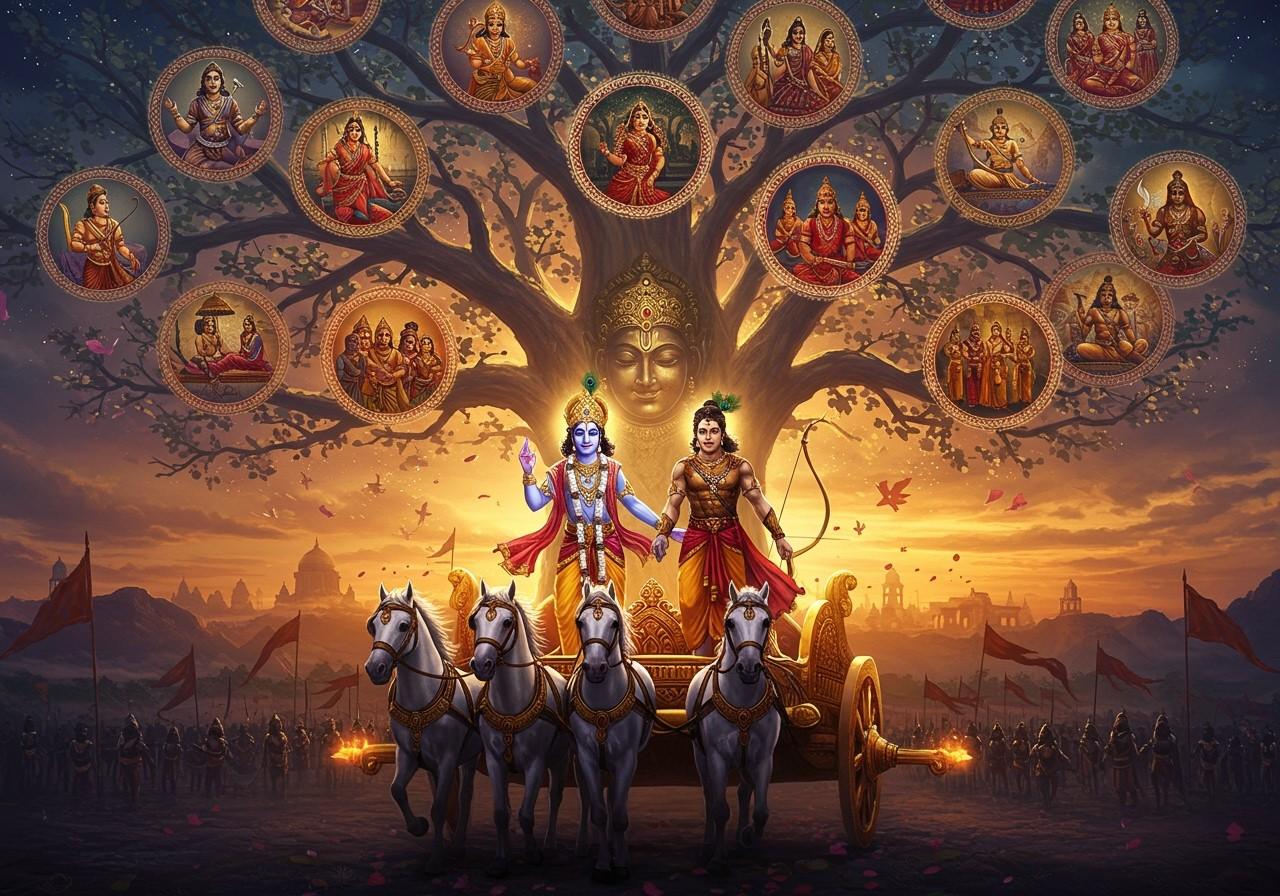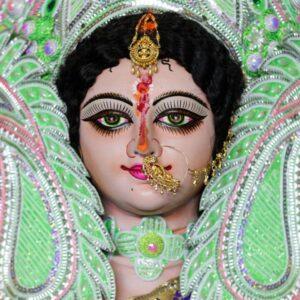
The Mahabharata, a timeless epic composed by Veda Vyasa, stands as a cornerstone of Indian cultural and spiritual heritage. Centering on the conflict between the Pandavas and Kauravas over the throne of Hastinapura, this ancient narrative weaves together complex characters, intricate relationships, and profound philosophical discourses. Let’s delve into the lives of some of the most significant figures who shaped the course of this epic tale.
The Pandavas: Champions of Dharma
The five Pandava brothers—Yudhishthira, Bhima, Arjuna, Nakula, and Sahadeva—stand at the heart of the Mahabharata. Yudhishthira, the eldest, embodies righteousness (dharma). Bhima possesses unmatched strength, while Arjuna is renowned for his exceptional archery skills. Nakula and Sahadeva contribute their wisdom and unwavering loyalty to the brotherhood. Their shared wife, Draupadi, plays a pivotal role in their lives and the unfolding drama. The Pandavas’ rivalry with their cousins, the Kauravas, fuels the central conflict of the epic, culminating in the devastating Kurukshetra war. Key events such as the infamous game of dice, their exile in the forest, and the disrobing of Draupadi shape their journey and highlight their resilience.
The Kauravas: Driven by Ambition and Jealousy
Led by the ambitious Duryodhana, the Kauravas serve as the primary antagonists in the Mahabharata. Duryodhana’s jealousy towards the Pandavas and his insatiable thirst for power ignite the conflict that drives the narrative. His ninety-nine brothers, including the infamous Dushasana, contribute to the escalating tensions. Their parents, the blind king Dhritarashtra and his devoted wife Gandhari, along with their cunning advisor Shakuni, add layers of complexity to the Kauravas’ story. Shakuni’s manipulative strategies play a significant role in shaping the events that lead to war.
Krishna: The Divine Guide and Strategist
Krishna, an incarnation of Lord Vishnu, emerges as a pivotal figure in the Mahabharata. As a divine guide, charioteer, and diplomat, Krishna’s influence permeates the narrative. His profound relationship with Arjuna, marked by wisdom and friendship, is central to the epic. Krishna’s teachings to Arjuna on the battlefield, immortalized in the Bhagavad Gita, offer profound insights into duty, dharma, and the nature of reality. His strategic brilliance and unwavering support for the Pandavas prove crucial in the Kurukshetra war.
Draupadi: A Symbol of Strength and Resilience
Draupadi, the wife of the Pandavas, stands as a symbol of strength, intelligence, and resilience in the face of adversity. Her unique marriage to the five brothers presents both challenges and triumphs. The disrobing of Draupadi during the game of dice becomes a pivotal moment in the epic, fueling her unwavering quest for justice and revenge. Draupadi’s relationships with other female characters, such as Kunti and Subhadra, further enrich the narrative and highlight the complexities of female agency in ancient India.
Bhishma: The Valiant Patriarch
Bhishma, the grandsire of both the Pandavas and Kauravas, commands respect and reverence. His legendary vow of celibacy and unwavering loyalty to the throne of Hastinapura shape his tragic destiny. Choosing duty over personal desires, Bhishma exemplifies the conflicts between dharma and personal fulfillment. As a seasoned warrior and wise mentor, his teachings offer profound philosophical insights. Bhishma’s fall in the Kurukshetra war marks a poignant moment, underscoring his unwavering commitment to dharma, even in the face of devastating consequences. Learn more about devotion and strength in epic tales.
Karna: The Tragic Hero
Karna, renowned for his generosity and unparalleled martial prowess, embodies the complexities of a tragic hero. Born to Kunti but raised unaware of his royal lineage, Karna’s unwavering loyalty to Duryodhana shapes his destiny. His rivalry with Arjuna and the internal conflicts arising from his hidden identity add depth and pathos to his character. Karna’s role in the Kurukshetra war and the moral dilemmas he faces make him a compelling figure, forever caught between loyalty and his quest for recognition. Explore the concept of leadership and virtue in epic narratives.
The Mahabharata Family Tree: Unraveling Complex Relationships
Understanding the intricate Mahabharata family tree is essential to grasping the dynamics of the epic. The relationships between Bhishma, Dhritarashtra, Pandu, and their descendants form a complex web of alliances and rivalries. These familial bonds and conflicts significantly influence the course of events, adding layers of meaning to the narrative. Exploring this detailed family tree allows us to comprehend the motivations and actions of the characters, enriching our understanding of the epic’s intricate plot.
Poojn.in: Your Source for Sacred Ritual Items
Connect with the divine essence of the Mahabharata through Poojn.in, India’s leading online store for cultural and spiritual goods. We offer a curated collection of authentic puja items, including:
- Deity Idols: Find beautifully crafted idols of Krishna, Arjuna, and other revered figures from the Mahabharata, perfect for your home altar. Explore our collection of Laddu Gopal idols and Radha Krishna murtis.
- Incense and Dhoop: Enhance your spiritual practice with traditional incense and dhoop, creating a sacred atmosphere for reflection and prayer.
- Sacred Texts and Books: Delve deeper into the wisdom of the Mahabharata with our collection of authentic texts, commentaries, and interpretations.
Visit Poojn.in today to discover a wide range of products that will enrich your spiritual journey and connect you with the timeless wisdom of the Mahabharata.
Conclusion: The Enduring Legacy of the Mahabharata
The Mahabharata, with its intricate characters and timeless wisdom, continues to resonate with audiences across generations. From Krishna’s divine guidance to Bhishma’s unwavering duty and Karna’s tragic loyalty, the epic explores the complexities of human nature, the pursuit of dharma, and the consequences of our choices. By understanding these narratives, we gain a deeper appreciation for India’s rich cultural and spiritual heritage, finding guidance and inspiration that transcends time.

